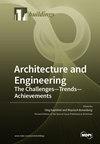超高性能人造砂混凝土中高强度钢筋的粘结行为:实验与建模
IF 3.1
3区 工程技术
Q2 CONSTRUCTION & BUILDING TECHNOLOGY
引用次数: 0
摘要
人造砂(MS)因其广泛的可用性和成本效益,被用作超高性能混凝土(UHPC)中石英砂(QS)的替代骨料,以制备超高性能人造砂混凝土(UHPMC)。本研究旨在评估 600 MPa 级高强度热轧带肋钢筋(HRB 600)在 UHPMC 中的粘结行为。研究人员设计了 30 个试样进行拉拔试验,并考虑了多个特征参数,包括 MS 替代率(0%、50%、100%)、水粘合剂比率(0.17、0.19、0.21)、钢纤维含量(0%、1%、2%)和锚固长度(2d、3d、4d、5d)。分析并说明了特征参数对破坏模式、粘结应力-滑移曲线、粘结强度、粘结-滑移机理和构成模型的影响。结果表明,UHPMC 的拉拔试样表现出三种不同的破坏模式:钢筋拉拔破坏、UHPMC 分裂破坏和分裂-拉拔破坏。当钢纤维含量从 0% 增加到 2% 时,粘结强度从 46.57 兆帕增加到 56.92 兆帕。此外,锚固长度的减少有利于提高粘接强度;当锚固长度从 2d 增加到 5d 时,粘接强度降低了 35.84%。粘结强度随着 MS 替代率的增加而增加。在水粘合剂比率方面,当水粘合剂比率为 0.17 时,粘合强度达到最高值。此外,还提出了一种适用于 UHPMC 和 HRB 600 螺纹钢的新粘结滑移构成模型,该模型考虑了 MS 替代率、水粘结剂比率等因素,具有良好的预测精度。本文章由计算机程序翻译,如有差异,请以英文原文为准。
Bond Behavior of High-Strength Steel Rebar in Ultra-High-Performance Manufactured Sand Concrete: Experiment and Modelling
Manufactured sand (MS), due to its wide availability and cost-effectiveness, is used as an alternative aggregate for quartz sand (QS) in ultra-high-performance concrete (UHPC) to prepare ultra-high-performance manufactured sand concrete (UHPMC). This study aims to assess the bond behavior of 600 MPa-grade, high-strength, hot-rolled ribbed bars (HRB 600) in UHPMC. Thirty specimens were designed for the pull-out tests, taking into account several feature parameters, including MS replacement ratio (0%, 50%, 100%), water–binder ratio (0.17, 0.19, 0.21), steel fiber content (0%, 1%, 2%), and anchorage length (2d, 3d, 4d, 5d). The effects of the feature parameters on the failure mode, bond stress–slip curves, bond strength, bond-slip mechanism, and constitutive model were analyzed and illustrated. The results reveal that the pull-out specimen of UHPMC exhibits three distinct failure modes: rebar pull-out failure, UHPMC splitting failure, and splitting-pull-out failure. The bond strength increases from 46.57 MPa to 56.92 MPa when the steel fiber content increases from 0% to 2%. Additionally, a decrease in anchoring length is beneficial for improving the bond strength; as the anchoring length increases from 2d to 5d, the bonding strength decreases by 35.84%. The bond strength increases with an increase in the MS replacement ratio. As for the water–binder ratio, the bond strength presents the highest value when the water–binder ratio is 0.17. In addition, a new bond-slip constitutive model applicable to UHPMC and HRB 600 rebar, considering the MS replacement ratio, the water–binder ratio, etc., is proposed, which presents favorable prediction accuracy.
求助全文
通过发布文献求助,成功后即可免费获取论文全文。
去求助
来源期刊

Buildings
Multiple-
CiteScore
3.40
自引率
26.30%
发文量
1883
审稿时长
11 weeks
期刊介绍:
BUILDINGS content is primarily staff-written and submitted information is evaluated by the editors for its value to the audience. Such information may be used in articles with appropriate attribution to the source. The editorial staff considers information on the following topics: -Issues directed at building owners and facility managers in North America -Issues relevant to existing buildings, including retrofits, maintenance and modernization -Solution-based content, such as tips and tricks -New construction but only with an eye to issues involving maintenance and operation We generally do not review the following topics because these are not relevant to our readers: -Information on the residential market with the exception of multifamily buildings -International news unrelated to the North American market -Real estate market updates or construction updates
 求助内容:
求助内容: 应助结果提醒方式:
应助结果提醒方式:


